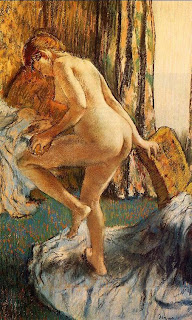Tuesday, April 23, 2013 -  ARCA alum,executive director,lawyer's committee for cultural heritage preservation,Leila Amineddoleh
ARCA alum,executive director,lawyer's committee for cultural heritage preservation,Leila Amineddoleh
 No comments
No comments
 ARCA alum,executive director,lawyer's committee for cultural heritage preservation,Leila Amineddoleh
ARCA alum,executive director,lawyer's committee for cultural heritage preservation,Leila Amineddoleh
 No comments
No comments
Leila Amineddoleh Begins First Month as Executive Director for the Lawyer's Committee for Cultural Heritage Preservation
 |
| Leila Amineddoleh (Cappadocia) |
Leila Amineddoleh (ARCA Alum '10) is the new Executive Director for the Lawyer's Committee for Cultural Heritage Preservation as of April 1.
Ms. Amineddoleh is of counsel at Lombard & Geliebter LLP and Adjunct Professor at Fordham University School of Law. In addition, Leila has been a frequent contributor to the ARCA Blog and a presenter at ARCA's Art Crime Conference. Leila, a pianist, also created "Classical Twist" with ARCA classmate and violinist Daniella Fischetti.
What will you be looking forward to this year in your role as Executive Director?
I am so excited about this position because the LCCHP is a great organization. The committee is in the midst of planning an exciting conference in NYC (tentatively planned for Nov 1-2,2013); submitting a written statement and testifying in support of the renewal of the Memorandum of Understanding between China and the US; continuing our call for the return of the ancient golden table at issue in In Re: Riven Flamenbaum; supporting the work of the Cambodian and US governments in repatriating a looted statue from Cambodia; and various other advocacy projects that are in the works.
Will we be seeing you in Amelia and are you presenting?
Unfortunately I will not be at the 2013 ARCA conference, but I will be spending time in Italy as I'll be teaching Art & Cultural Heritage Law in Rome for St. John's School of Law's summer program. What other upcoming conferences or panels will you be attending? Earlier this month I moderated a panel at Fordham Law School entitled "Defining Cultural Ownership: Shifting Focus, Shifting Norms..." It was well-attended and absolutely fascinating, as we had a fantastic line-up of speakers. My time in Italy this summer will also be busy with events, as my course includes tours around Rome, a field trip to the Roman Forum (led by an archaeologist), and various other events. I haven't committed to any other major events scheduled for after my time in Rome, due to the demands of my litigation practice. However, things in NY generally start getting hectic again in the fall.











